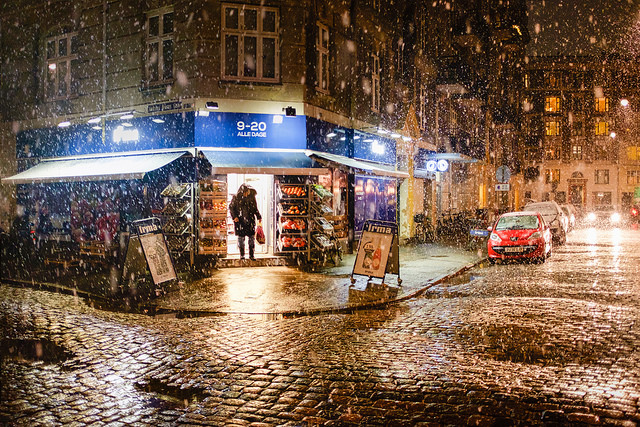Next time you go shopping, particularly for expensive items, be sure to dress warmly — and not just for the trip to the store. You should also bundle up for when you’re in the store.
Doing so may save you from making a rash purchase. For, according to a study published recently in the Journal of the Association for Consumer Research, when we’re uncomfortably cold, our purchasing decisions tend to be emotion-based rather than rational.
And those emotions apparently encourage us to buy, buy, buy.
Multiple experiments
The study, which was conducted by marketing professors Rhonda Hadi of the University of Oxford and Lauren Block of the City University of New York, is actually a series of five separate experiments.
The first experiment demonstrated that when people are asked to focus on their emotions while assessing a series of advertisements they tend to say they feel physically warmer than while they are assessing the advertisements using objective criteria.
The second showed that when people are exposed to uncomfortable temperatures while being asked to describe their feelings regarding certain scenarios (such as “going to a rock concert” or “taking a test at school”), they report less discomfort than if asked to talk about those scenarios objectively.
A third experiment found that the colder the temperatures to which people are exposed, the more they rely on their emotions when assessing a wildlife conservation scenario (a rescue effort to save pandas).
Effect on willingness to spend
All three of those experiments established a link between temperature and affect (the experience of feeling or emotion). The study’s final two experiments demonstrated how cold temperatures drive consumer behavior.
For experiment No. 4, the researchers recruited 112 undergraduate students. They were asked to hold a cup in their non-dominant hand that contained water at either an uncomfortably warm or an uncomfortably cold temperature.
While in that hot or cold “condition,” the students were presented with a hypothetical situation in which they were asked to purchase insurance for an antique clock. Half of the students read a strongly sentimental description of the clock. For the other students, the clock was described objectively and without sentiment. The participants were then asked to indicate the most they would be willing to spend to insure the clock.
The researchers found that the students were willing to pay significantly more for the clock’s insurance after reading the highly sentimental description of the clock — but only when they were in the cold condition. When in the warm condition, the description of the clock made no significant difference in how much they said they would pay.
The final experiment, which involved 195 students, was similar to experiment #4, except this time the temperature of the room was manipulated, from as cold as 64 to as high as 91 degrees Fahrenheit.
The researchers found that once again, when confronted with a sentimental description of the clock and when sitting in a colder room, the students were willing to spend considerably more on insuring the object.
The researchers were even able to pinpoint the temperature above which the students no longer showed any difference in their willingness to fork out money on the clock: 78 degrees.
Limitations and implications
The study comes with many caveats. Most notably, the final two experiments involved only students, as well as a hypothetical scenario. The results might have been different with a more demographically diverse group of participants — or in a real-life purchasing situation where people were putting their own money at risk.
Still, these findings support other research that has shown that people place more value on products and experiences that evoke emotions when they are exposed to cold temperatures.
One study found, for example, that people prefer romantic movies when it’s cold outside.
Some retailers may already be aware of this cold-loosens-the-wallet phenomenon. As Hadi and Block point out in their paper, there is “a curious correlation across retail stores in Manhattan: the more expensive the merchandise, the colder the store temperature.”
It’s also been reported that a luxury mall in Hong Kong keeps its temperature at a frigid 59 degrees, they add, and that several high-end grocery stores in the United Kingdom are “positively arctic.”
So, again, stay bundled up the next time you go shopping. It might just save you some money.
FMI: You can read Hadi and Block’s study in full on the website for the Journal of the Association of Consumer Research.






Hmmm… I confess I DID buy a snow shovel on Monday – to replace another one that was several seasons old and had broken where the blade meets the handle. That said, however, the store temperature seemed pretty normal and temperate, so I only bought one, not four.
Now I know why everything is more expensive in Minnesota.